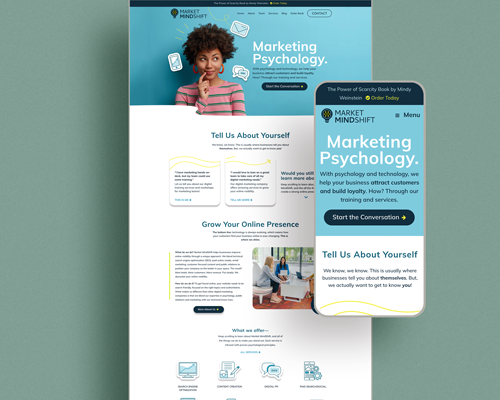Step-by-Step Guide to Researching Your Target Persona
Understanding your target audience is essential for creating effective marketing strategies and meaningful content. A target persona is a semi-fictional representation of your ideal customer, based on real data and market research. By identifying their preferences, challenges, and behaviors, you can tailor your messaging and offerings to meet their needs. Here’s a step-by-step guide to researching and building a comprehensive target persona.

Step 1: Define Your Objectives
Before diving into research, clarify the goals of your target persona project. Ask yourself:
- What products or services are you promoting?
- What challenges or problems does your audience face?
- What insights will help refine your marketing strategies?
By defining your objectives, you can focus your research on collecting relevant and actionable data.
Step 2: Analyze Your Existing Customer Base
Your current customers provide invaluable insights into your target audience. Use your CRM, sales data, or analytics tools to identify common traits among your most loyal and profitable customers.
Key Data Points to Examine:
- Demographics: Age, gender, location, and income level.
- Behavioral data: Purchase history, website interactions, and customer lifecycle stage.
- Preferences: Communication channels they use, preferred product types, and common inquiries.
Tools to Use:
- Google Analytics
- Customer Relationship Management (CRM) software
- Social media analytics
Step 3: Conduct Surveys and Interviews
Direct feedback from your audience can provide deeper insights. Surveys and interviews are excellent tools for gathering qualitative and quantitative data.
How to Execute:
- Surveys: Use tools like Google Forms or Typeform to ask questions about demographics, purchasing habits, challenges, and preferences. Keep the survey short to encourage participation.
- Interviews: Speak directly with a mix of customers, prospects, and even those who didn’t convert. This can help you identify pain points and opportunities for improvement.
Sample Questions:
- What’s the biggest challenge you’re currently facing?
- How did you hear about our product/service?
- What factors influence your purchasing decisions?
Step 4: Research Your Competitors
Competitor analysis helps you understand how similar businesses are targeting your potential audience. Examine their messaging, social media content, and customer reviews to identify gaps or trends.
Steps to Follow:
- Visit competitors’ websites and analyze their customer-focused content.
- Check their social media channels for engagement trends.
- Read online reviews to understand customer pain points and preferences.
Tools to Use:
Step 5: Leverage Social Media Insights
Social media platforms are goldmines for understanding audience behavior and preferences. Most platforms provide analytics tools that reveal audience demographics and engagement metrics.
Steps to Take:
- Analyze your followers’ demographics using tools like Facebook Insights or Instagram Analytics.
- Monitor comments, shares, and likes to identify what resonates with your audience.
- Join groups or forums where your target audience is active to observe discussions and trends.
Step 6: Identify Pain Points and Motivations
Your target persona should reflect the challenges and goals of your audience. Use the data you’ve collected to identify their:
- Pain points: What problems are they trying to solve? What barriers prevent them from achieving their goals?
- Motivations: What drives them to seek a solution? Is it convenience, cost savings, or emotional satisfaction?
Example:
If you sell eco-friendly products, your persona’s pain points might include difficulty finding sustainable options, while their motivation could be a desire to reduce their carbon footprint.
Step 7: Segment Your Audience
Most businesses cater to multiple audience segments. Create separate personas for each group to address their unique needs. For instance:
- Persona A: Young professionals seeking convenience.
- Persona B: Families looking for affordability and safety.
By segmenting your audience, you can tailor campaigns for better engagement and conversion rates.
Step 8: Draft Your Persona Profiles
Compile all your research into detailed persona profiles that guide your marketing strategies. A well-rounded persona includes:
- Basic information: Name (fictional), age, gender, location, and job title.
- Background: Education level, income range, and lifestyle preferences.
- Goals and challenges: What they want to achieve and the obstacles they face.
- Preferred channels: How they consume content or interact with brands.
Example:
Persona Name: Eco-conscious Emma
Age: 28
Job Title: Marketing Professional
Goals: Reduce carbon footprint, find eco-friendly products.
Challenges: Limited options locally, high costs.
Preferred Channels: Instagram, sustainable living blogs.
Step 9: Validate and Update Regularly
Your target audience may evolve over time. Validate your personas by testing marketing campaigns and gathering feedback. Use this data to refine your profiles and ensure they remain accurate.
Validation Tips:
- A/B test campaigns to see which messaging resonates most.
- Monitor changes in customer behavior or preferences.
- Conduct periodic surveys to stay updated on audience needs.
Conclusion
Researching and building a target persona is an ongoing process that lays the foundation for effective marketing strategies. By understanding your audience’s demographics, behaviors, pain points, and goals, you can create content and campaigns that truly resonate. At Mash Creative Co., we specialize in helping businesses develop data-driven personas and marketing strategies. Contact us today to refine your audience insights and achieve measurable results!



